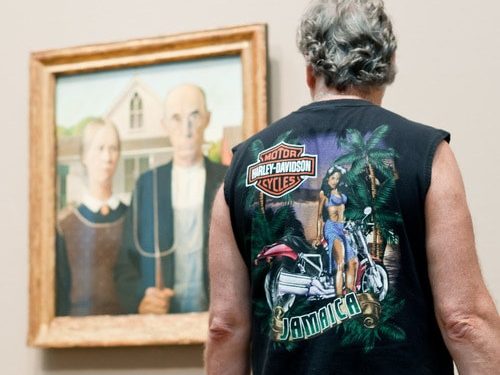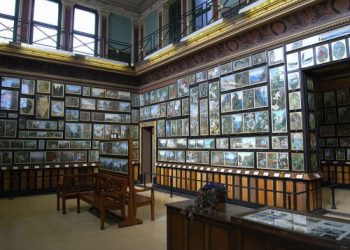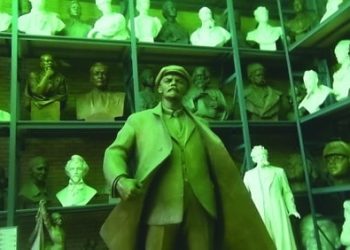As a museologist I have spent many hours observing people looking at art, either for my studies or for work or just for my own damn pleasure. If you remember my post from last year, then you know I am sort of obsessed with this topic, especially when it comes to museum visitors viewing art through mobile devices. But what about the response to famous art? Grant Wood’s American Gothic is probably America’s most well-known painting. People first became aware of this particular image, not by visiting a museum, but by the oversaturation of the media. About 50 years ago The Beverly Hillbillies were on the cover of The Saturday Evening Post posed as the American Gothic couple. The number of parodies continued, from the opening scene of The Rocky Horror Picture Show to Paris Hilton’s The Simple Life (remember that shit?) that at this point who doesn’t “get” the reference? When this happens, art is no longer art, but a commodity. Sorry, I didn’t mean to go all Theodor Adorno on you. It’s the theoretical bullshit of my MA talking here. Speaking of Adorno, I once wrote (or should say I was forced to write) an essay in graduate school specifically comparing Adorno’s theories to art in museums. The public doesn’t understand why they value a piece like American Gothic, only that they’ve “seen” it before; it’s so familiar to them that it must be important. Although the painting debuted at the Art Institute of Chicago in 1930 (and has been on display ever since) I’ll never forget rolling my eyes as a couple argued over whether or not they were seeing the original American Gothic. The wife kept saying, “Oh no! It must be a copy.” The husband was, like, “Are you sure? I guess we’ll never know.” Ignore the fact that they’re standing in one of the world’s most famous art museums with one of the country’s most famous paintings. After a lifetime of seeing it reproduced in virtually every way they, in their minds, can’t possibly be viewing the real thing.
















